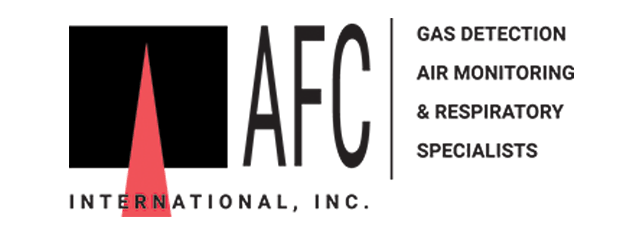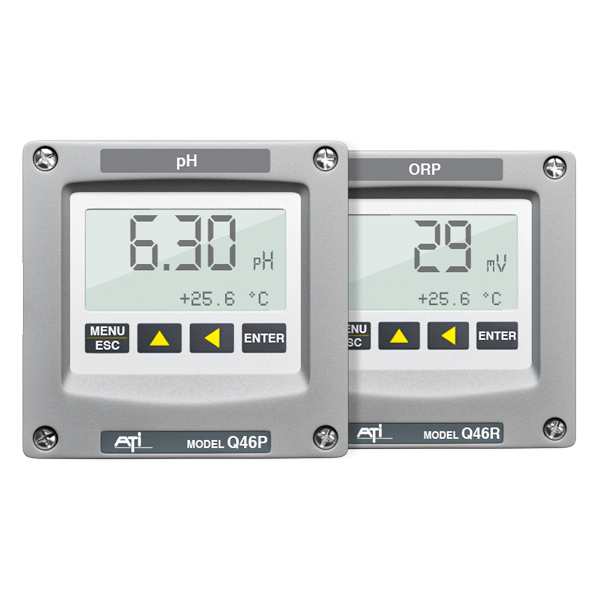Description
Description
The Q46H/83 Potassium Permanganate monitor consists of two main components, an electronic display unit and a chemistry module. The chemistry module contains sample and reagent pumps, sample handling systems, and the gas sensor that provides the final measurement. An inlet overflow assembly attached to the bottom of the chemistry module is where the inlet sample line and drain line are connected. Sample inlet flows of 250-100 ml/min are recommended to keep systems response time to a minimum. Reagent bottle holders are supplied so that reagents can be wall mounted below the chemistry system.
Potassium Permanganate (KMnO4) is a strong oxidizer used in the water industry for reduction of organics in raw water. It is also used for control of zebra mussel problems at raw water intake structures. Continuous monitoring of low permanganate concentrations allows operators to adjust chemical feed rates and achieve target values. Chemical feed problems that result in either too little or too much residual can be quickly identified and corrected. Continuous monitoring of potassium permanganate in treated water presents sensor contamination issues. When permanganate reacts with organics or other reducing materials in solution, manganese dioxide (MnO2) is formed and readily plates out on sensing electrode surfaces. The resulting deposits degrade the measurements and can be difficult to clean.
The Q46H/83 eliminates this problem by employing a measurement method in which the sensor never comes into contact with the sample. In operation, water conditioning permanganate is mixed with pH buffer and potassium iodide solutions. Permanganate oxidizes the iodide to iodine (I2) and the resulting I2 is stripped out of solution and measured using an I2 gas sensor. The “gas phase” measurement technique eliminates the MnO2 sensor fouling, resulting in a system capable of providing long term reliability.
The electronics module can be mounted near the chemistry unit or up to 100 feet away depending on installation requirements. Permanganate concentration is displayed on a large format back-lit LCD with a second alpha-numeric line below to indicate other operating parameters. Three SPDT alarm relays and two 4-20 mA outputs are provided, and digital communication are available.
The Q46H/83 Potassium Permanganate Monitor employs ATI’s Auto-chem chemistry module to provide chemical treatment of the sample, air stripping of the released iodine, gas sample conditioning and iodine gas measurement. In operation, a small amount of sample is pumped from an overflow assembly into the chemistry system and mixed with pH 4 buffer and potassium iodide (KI) solution.
2MnO4– + 6I– = 3I2 + 2MnO2
The treated sample flows into an air-stripping chamber where a controlled amount of air removes the iodine from the water sample. The air coming from the top of the stripping chamber is directed to a gas conditioning module which removes any excess water and then to a flowcell containing the iodine gas sensor. The iodine gas sensor is an amperometric membraned sensor that generates current in proportion to the amount of iodine in the gas stream. Since the gas sensor is only in contact with clean air containing iodine, sensor fouling due to contaminants in the sample is eliminated.
Installation
Q46H/83 “Gas Stripping” permanganate analzyers consist of two main components, the Auto-Chem chemistry module and a separate electronic unit (Q46H) that provides the permanganate concentration display and various outputs. AC power is required for both components and a 25 feet interconnecting sensor cable is supplied. The two components can be separated by up to 100 feet, if desired.
Q46H Monitors provides a large format concentration display with a second alpha-numeric lower line for secondary information. The monitor provides two standard 4-20 mA analog outputs and three SPDT relays. If desired, one analog output can be configured for PID control use. In addition, the monitor provides options for digital communications including Profibus-DP, Modbus-RTU and Ethernet-IP.
Auto-Chem chemistry systems include peristaltic pumps for sample and reagents, air supply for the stripping system and gas conditioning components. All components are easily accessible from the front of the unit making service quick and easy. Attached to the bottom of the enclosure is an inlet overflow chamber where sample and drain connections are made. A sample flow rate of 5-20 gallons per hour (300-1200 ml/min) is recommended.








